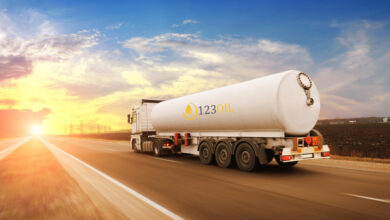Wind Power Projects: Pioneering a Green Future
In the quest for sustainable energy solutions, wind power projects have emerged as pioneering initiatives driving the transition towards a greener and more sustainable future. With their ability to harness the renewable and inexhaustible power of the wind, these projects are playing a significant role in reducing carbon emissions, enhancing energy security, and fostering economic growth.
In this article, we will explore the transformative impact of wind power projects and their contributions to shaping a cleaner and more sustainable world.
Understanding Wind Power Projects
Wind power projects involve the installation and operation of wind turbines to convert the kinetic energy of wind into electricity. These projects are typically developed in areas with favorable wind conditions, such as coastal regions, plains, and mountain passes, where the wind is strong, consistent, and predictable. Wind turbines consist of large rotor blades connected to a generator, which converts the rotational energy of the blades into electrical power.
Advantages of Wind Power Projects
- Renewable Energy Source: Wind power is a renewable energy source that does not deplete finite resources or contribute to greenhouse gas emissions, making it a sustainable alternative to fossil fuels.
- Carbon Emissions Reduction: By displacing electricity generated from fossil fuels, wind power projects help reduce carbon emissions, mitigate climate change, and improve air quality.
- Energy Security: Wind power projects enhance energy security by diversifying the energy mix, reducing dependence on imported fossil fuels, and mitigating the risks of supply disruptions.
- Job Creation: The development, construction, and operation of wind power projects create jobs in manufacturing, construction, maintenance, and support services, stimulating economic growth and investment in local communities.
- Cost-Competitive: Advances in technology, economies of scale, and policy support have made wind power increasingly cost-competitive with conventional energy sources, driving down the cost of electricity for consumers.
Key Components of Wind Power Projects
- Wind Turbines: Wind turbines are the primary components of wind power projects, consisting of rotor blades, a nacelle (housing containing the generator and gearbox), and a tower. The size and capacity of wind turbines have increased significantly in recent years, leading to higher energy yields and lower costs.
- Wind Resource Assessment: Prior to the development of a wind power project, a comprehensive wind resource assessment is conducted to evaluate the wind speed, direction, and variability at the project site. This data is crucial for determining the feasibility and potential energy output of the project.
- Grid Integration: Wind power projects must be integrated into the electrical grid to deliver electricity to consumers. This involves connecting the project to transmission lines and coordinating the supply of wind-generated electricity with grid operators to ensure reliable and stable power delivery.
- Environmental Impact Assessment: Wind power projects undergo environmental impact assessments to evaluate their potential effects on wildlife, habitats, and ecosystems. Measures such as sitting, turbine design, and operational protocols are implemented to minimize environmental impacts and protect biodiversity.
Challenges and Solutions
While wind power projects offer numerous benefits, they also face certain challenges that must be addressed to maximize their potential. These challenges include intermittency, grid integration, land use conflicts, and social acceptance. To overcome these challenges, stakeholders are investing in research, technology innovation, policy support, and community engagement initiatives to optimize the performance, reliability, and social acceptance of wind power projects.
- Case Studies: Leading Wind Power Projects Horns Rev 3 Offshore Wind Farm (Denmark): With a capacity of 407 MW, Horns Rev 3 is one of the world’s largest offshore wind farms, supplying clean electricity to over 425,000 Danish households and reducing carbon emissions by 600,000 tons annually.
- Gansu Wind Farm (China): Located in the Gansu province, the Gansu Wind Farm is one of the largest wind power projects in the world, with a total installed capacity exceeding 6,000 MW. The project plays a crucial role in China’s efforts to increase renewable energy generation and reduce air pollution.
- Vestas Wind Systems (Global): Vestas is a leading manufacturer of wind turbines and a key player in the wind power industry, with installations in over 85 countries worldwide. The company’s innovative wind turbine technology and commitment to sustainability have made it a driving force behind the growth of wind power projects globally.
Conclusion
Wind power projects are at the forefront of the transition towards a sustainable energy future, harnessing the power of the wind to generate clean, renewable electricity. With their environmental benefits, economic opportunities, and technological advancements, wind power projects are paving the way for a greener, more resilient, and prosperous world. By investing in wind energy infrastructure, fostering innovation, and promoting collaboration among stakeholders, we can unlock the full potential of wind power projects and accelerate the global transition to a low-carbon energy system.



